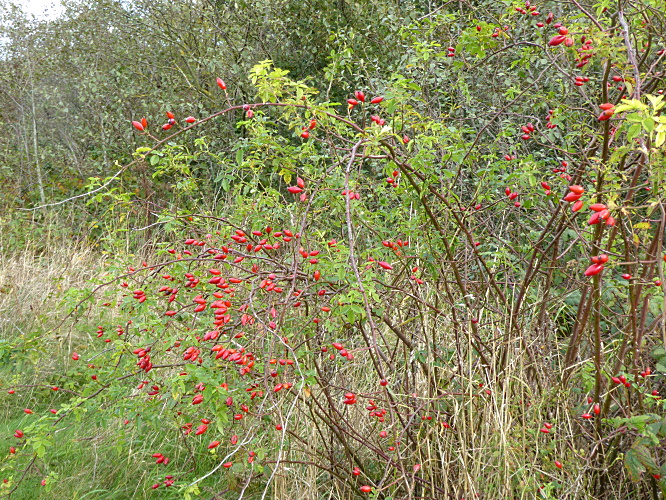
Bidston Moss was originally low-lying wetland marsh at the head of Wallasey West Float Dock. From 1936 to 1995 it was a landfill site for residential, commercial and industrial waste, then Merseyside Waste Disposal Authority and the charitable trust Groundwork Wirral undertook environmental restoration work to landscape the site. Since then Bidston Moss has been transformed into a thriving community woodland. It is managed by the Forestry Commission, part of the Mersey Forest and is designated a Local Nature Reserve.
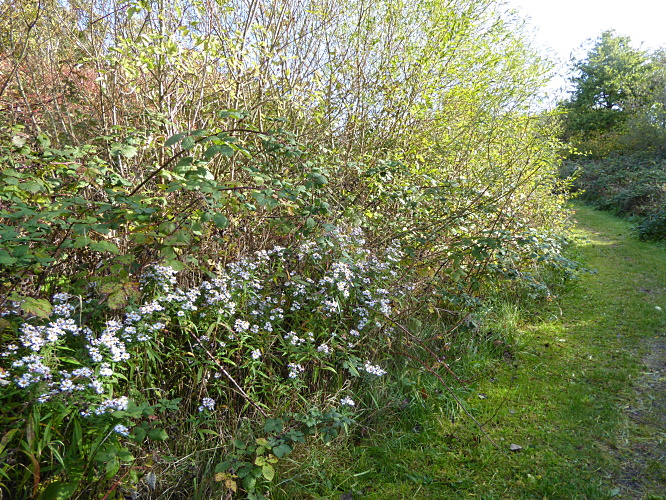
It is many years since we have been there, and access is from Wallasey Bridge Road, just next to the household waste recycling centre. There are tarmacked or mown paths which climb through the young woodland, reaching open meadows near the top. The young trees are all natives: Oak, Alder, Birch, Willow, Field Maple, Rowan and the occasional Ash and White Poplar. We saw very few Sycamores. The middle storey has Hawthorn, Hazel, Guelder Rose, Dog Rose, Bramble, Nettle and the non-native Buddleia. There also seemed to be two kinds of Dogwood. The native shrub Common Dogwood Cornus sanguinea has black berries, which we didn’t see, but I think it may have been the one flowering late, or turning autumnal purple without flowering. The other one had white berries and I think was the North American Gray Dogwood or Northern Swamp Dogwood Cornus racemosa.
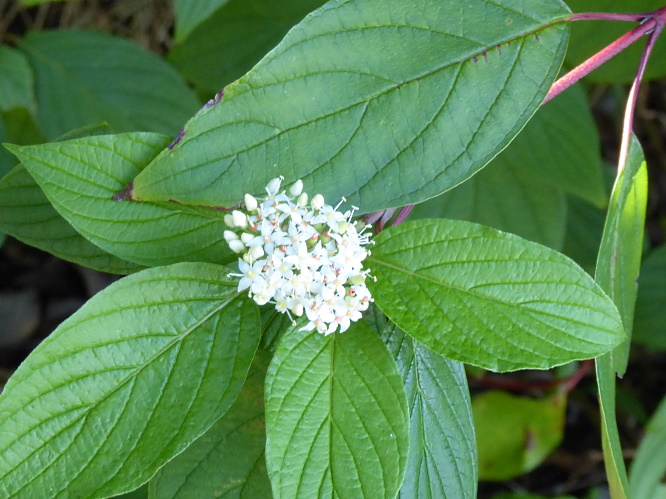

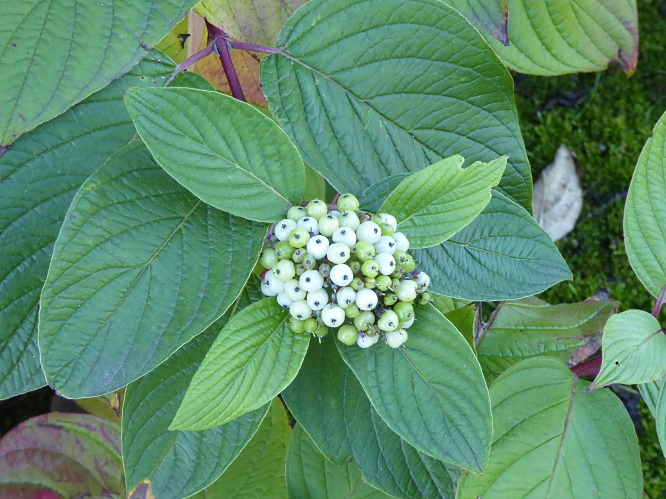
All along the edges were wild flowers, with a surprising number still in bloom: Dandelions, Toadflax, Evening Primrose, Ragwort, Michaelmas Daisies, Purple Loosestrife, Scabious, Yarrow and Bird’s foot trefoil. Low yellow flowers rather like Buttercups were Creeping Cinquefoil Potentilla reptans.
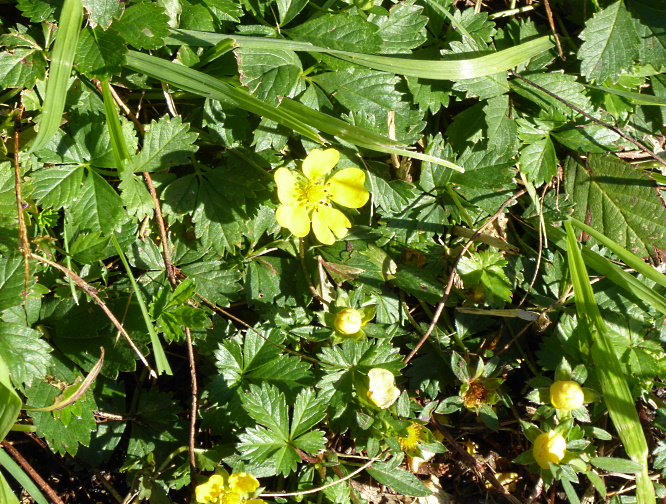
There were patches of low round leaves, apparently newly-emerging, with the largest ones about 10 cm (4 inches) across. We considered Coltsfoot and Butterbur, but I think they were Winter Heliotrope, as the leaves were smoother than those of Butterbur.

A tall yellow branching plant had us racking our brains for a while, but I think it was either Ribbed Melilot or Tall Melilot, which are almost indistinguishable.
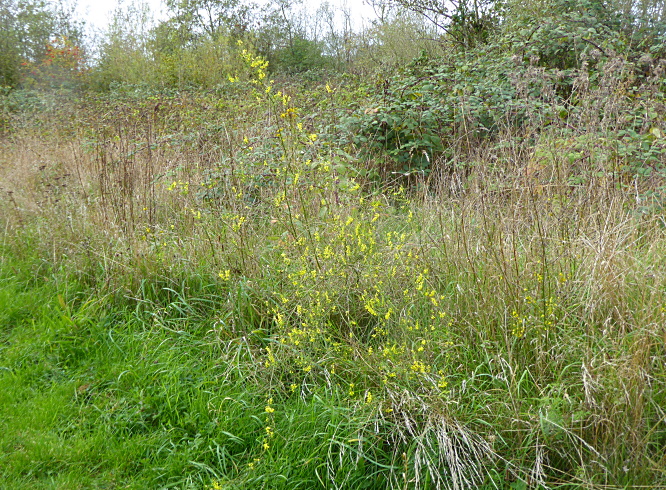
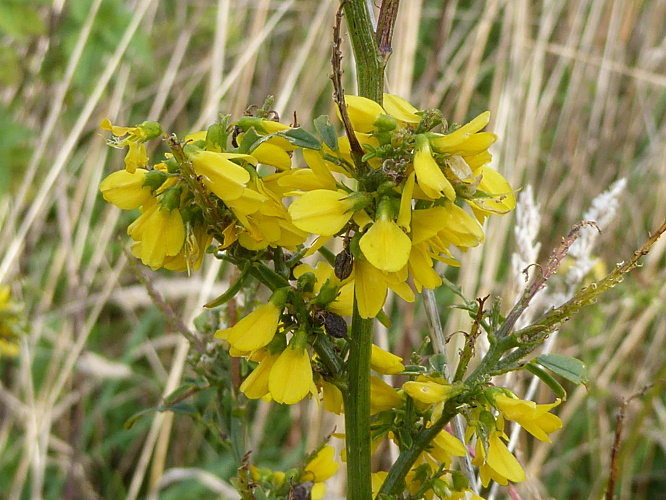
A few birds were about. Crows flew over, and Goldfinch, Robin and Dunnock were twittering or calling from the hedges. A Buzzard cruised overhead and once we though we heard a Jay. There were a fair few small flying insects. We thought we glimpsed a dragonfly, otherwise unidentified, and some of us definitely saw a Comma butterfly sunning itself on a broad leaf. When we came to gaps in the trees, there were wonderful views. To the north west we could look out over Wallasey Golf Club to Liverpool Bay with its rows of wind turbines. To the south we spotted the sails of Bidston Windmill peeping above the trees on Bidston Hill.
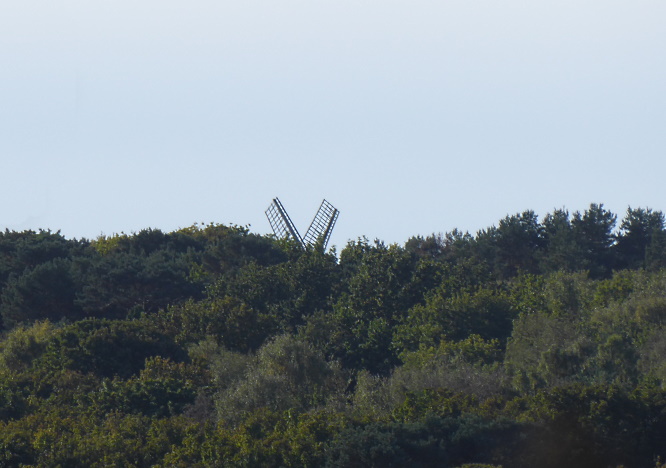
Near the top we rounded a corner and saw the best view of all, Liverpool City centre, framed by the trees.
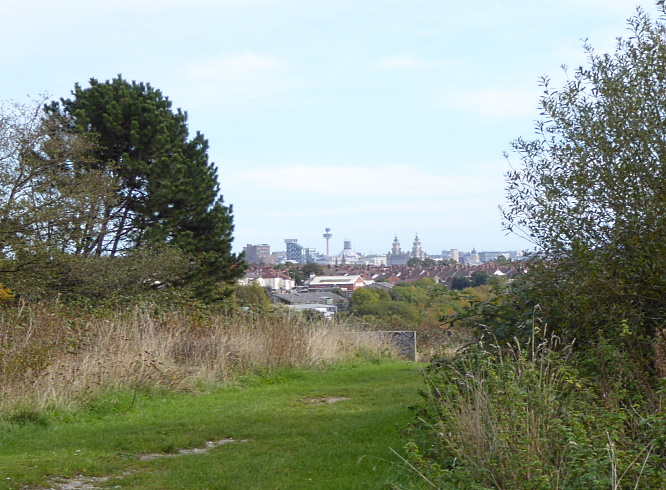
Also of interest were the seed heads and berries. There were lots of Hawthorn berries and Rose hips, of course. In one spot we found a dried stalk of Giant Hogweed, about 7 feet tall. The Guelder Rose leaves were turning, and its berries were luminous.

The dried-out heads of Wild Carrot and Teasel were marvellously geometric.
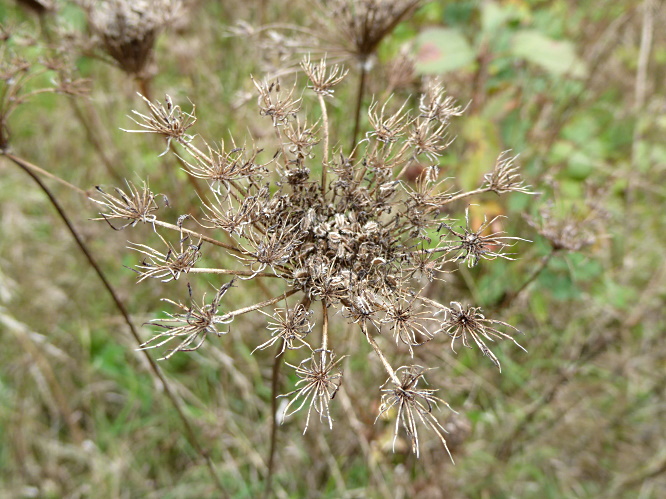
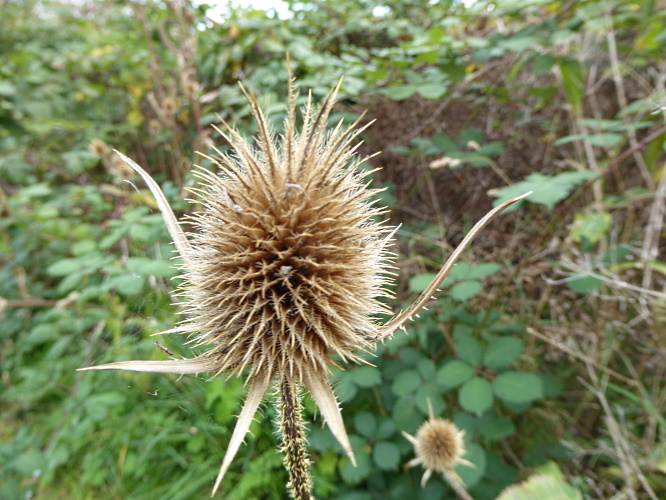
Public transport details: Train from Central at 10.20, arriving Birkenhead North 10.35. We attempted to return from Birkenhead North at 14.19, but station announcements advised that all Wirral trains were at a standstill because one had broken down at James Street. So we walked to Laird Street / Miriam Place and got the 38A at 14.40, arriving Birkenhead Bus Station at 14.50. We met some refugees from the MNA Dibbinsdale walk there, and we all got on bus 423 and were back in Liverpool at 15.00. A bit late, but we made it!
